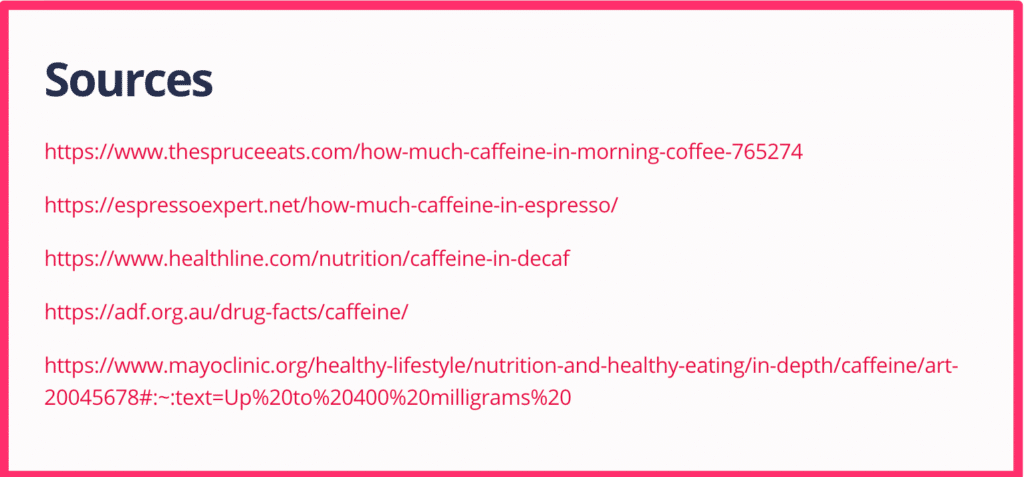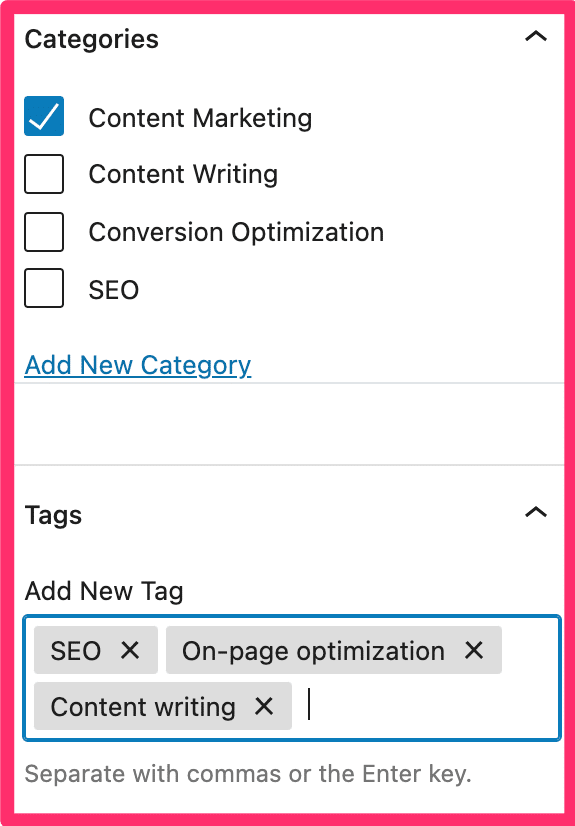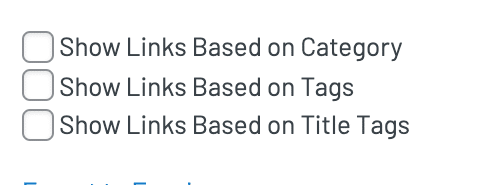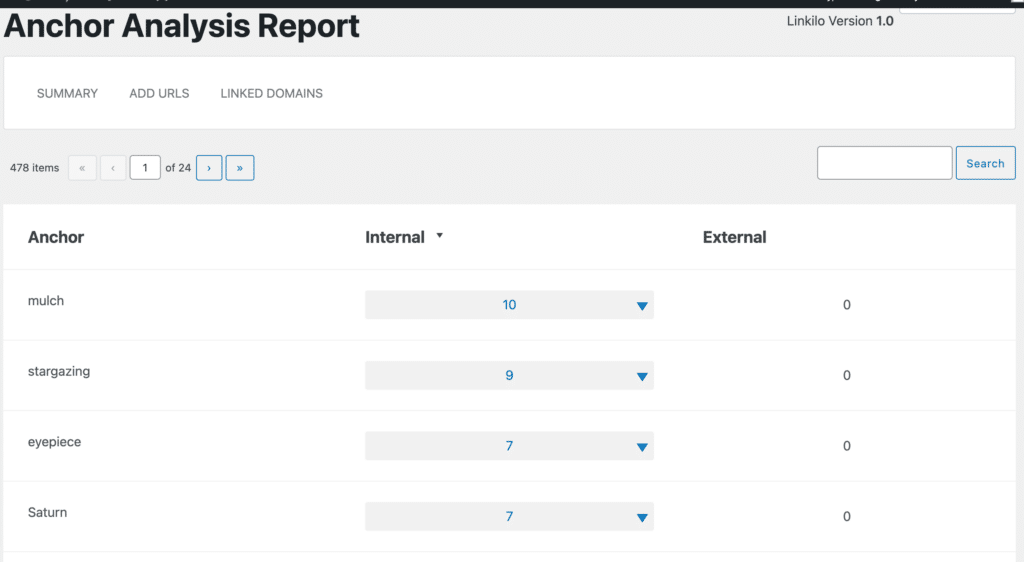Link building is a crucial part of SEO, but it’s not just about getting other websites to link to yours. The words you use for those links, both on your own site (internal links) and on others (external backlinks), have a big impact on your search engine rankings. These words are called anchor texts, and they’re like signposts that guide both people and search engines to the right destination.
In the past, simply stuffing a page with keywords might have helped your rankings. But today, search engines like Google are much smarter. They look at the anchor text, the surrounding content, and how your articles connect to each other to understand what your website is really about.
In this guide, we’ll dive deep into anchor text, and how it impacts both internal and external links. Whether you’re new to SEO or a seasoned pro, you’ll discover valuable tips and strategies to make your anchor text work harder for you, driving more traffic to your website and improving your search engine visibility.
What is anchor text in SEO?

Anchor text is the clickable text in a hyperlink. It’s usually blue and underlined, but it can be styled differently. This is what you see and click on when you want to visit another page or website. For example, the sentence below, “click here” is the anchor text linking to a helpful resource.
Click here to check out our WordPress Plugin on internal link building.
Here’s the anchor text example code:
<a href="http://www.example.com">Anchor Text</a>How anchor text works
Anchor text works in a few different ways:
- For people: Anchor text tells people what they can expect if they click on a link. If a link says “Learn more about anchor text,” you have a pretty good idea of what you’ll find on the other side.
- For search engines: Search engines like Google also read anchor text. They use it to understand what the linked-to page is about. So, if a lot of links point to a page with the anchor text “best coffee shops in Seattle,” Google is more likely to rank that page for searches related to coffee shops in Seattle.
- On your own website (internal links): Anchor text helps people and search engines navigate your site and understand how your pages relate to each other. It’s like a map that shows the connections between your content.
Unlock the Power of Anchor Text for SEO
Discover the best practices for using anchor text effectively and boost your website’s search engine rankings. Don’t miss the opportunity to optimize your internal linking strategy!
Explore Linkilo’s Internal Linking Tools! Elevate your SEO game with the right anchor text!Here’s what Google said about anchor text:
Search engines use external anchor text (text other pages use to link to your site) to reflect how other people view your page – and by extension, what your pages may be about. While website owners typically can’t control how other sites link to theirs, “you can make sure that anchor text you use within your site is useful, descriptive, and relevant.” (Source: Google)
If several sites believe that a certain page is important for a certain collection of words, that page can rank well even though the terms do not appear in the text itself.
If your site also does the same…
Well… you get the point.
That was about external anchor text, but what about internal anchor text? Here’s what John Mueller said:
“I don’t think we do anything special to the length of words in the anchor text. But rather, we use this anchor text as a way to provide extra context for the individual pages.
Sometimes if you have a longer anchor text that gives us a little bit more information. Sometimes it’s kind of like just a collection of different keywords.
So, from that point of view, I wouldn’t see any of these as being better or worse. And it’s something where, especially for internal linking, you want to probably focus more on things like how can you make it clearer for your users that if they click on this like this is what they’ll find.
So that’s kind of the way that I would look at it here. I wouldn’t say that shorter anchor text is better or shorter anchor text is worse, it’s just different context.”
(Source: Google)
The point is to help search engines understand the content better. Like you would write a better title tag or meta description and treat anchor text the same.
How does anchor text affect SEO?
No doubt, Google has always provided us with enough information that they use anchor words to learn about the content of webpages so that it can rank them for the appropriate keywords. The original Google paper has an entire section dedicated to anchor text. Here’s a snippet:
“First, anchors often provide more accurate descriptions of web pages than the pages themselves. Second, anchors may exist for documents which cannot be indexed by a text-based search engine, such as images, programs, and databases….
This idea of propagating anchor text to the page it refers to was implemented in the World Wide Web Worm [McBryan 94] especially because it helps search non-text information, and expands the search coverage with fewer downloaded documents. We use anchor propagation mostly because anchor text can help provide better quality results. Using anchor text efficiently is technically difficult because of the large amounts of data which must be processed. In our current crawl of 24 million pages, we had over 259 million anchors which we indexed.“
– The Anatomy of a Large-Scale Hypertextual Web Search Engine
Anchor text is used to play a significant role in search engine rankings – perhaps a little too much. However, times can change, and search engines are always adapting and processing new and better ways to provide the best query to the user’s intent.
There will always be someone who will try to manipulate, overdo, or misuse anything Google suggests. So it’s imperative to work on quality and distribute anchor text when necessary versus SEO-based. Penguin update in 2012 is one of those many examples of quality control.
And Google recently launched a neural network-based technique for natural language processing (NLP) pre-training called Bidirectional Encoder Representations from Transformers, or as we call it—BERT. We’ll get to that later in this article.
Why you should not use “here” for your anchor texts
A question was asked, “is there any difference if an internal link is under the word “here” or if it is linked in a keyword?” in the Search Central SEO Office Hour at 20:14 into the video.
This is what Google responded with:
It doesn’t matter if it’s an internal link to something on your site or if it’s an external link pointing to something else, “here” is still bad link text. It could be pointing to any page and it doesn’t tell us what the page is about. It’s much better to use words that are related to that topic so that users and search engines know what to expect from that link.”
The text you choose for anchors is important for a few reasons:
- It informs your readers about what they can expect before they click the link. Because anchor words promise what is on the other side of the link, they must be extremely relevant.
- It informs Google algorithms about the nature of your content. Google’s algorithms use your anchor choices to ensure you are not engaging in spammy practices and understand the topics you are linking to in your copy.
But before we get into the actual practice, we need to know the different anchor texts and what you can use.
What are the different types of anchor text? 6 Anchor text examples:
Say you want to rank for “Internal Link WordPress Plugin.“
If you plan to reach other sites, you might write an article for them and put that anchor text yourself. But if you’ve written or promoted your product well, some people will link to your site without asking.
And…
Say someone decided to link to our homepage Linkilo without the anchor text “Internal Link WordPress Plugin.”
While our primary target is what we hope for, not every person will link to your page similarly.
So, let’s review some variations on how they might use anchor text.
1. Exact-match
The exact match anchor text contains the exact keyword that the website to which you are referring is targeting.
For example, our keyword in focus is “what is a page per session.”
We would link https://linkilo.copages-per-session/ to this blog post and want to hyperlink with the words “what is a page per session” since it is the keyword we are targeting here.
While adding or earning exact match anchors for link building or internal linking is important, Google also pays close attention to these links and could penalize you for spam if you have too many.
If you use the same word keywords for several guest post articles, Google might treat those as paid links. And you’re not providing any MORE value to anyone by trying to use the same keywords.
2. Partial-match
Your keyword term is used in partial match anchors and other generic, random, or stops terms.
Partial-match examples would be:
https://linkilo.co/writing-a-blog-post-outline/Keyword “blog post outline” Linking “how to write a blog post outline”https://linkilo.co/evergreen-content/keyword “evergreen content” Linking “Reasons why you want to focus on evergreen content”
This is a useful approach for anchor text because I can always use my keyword without being spammy.
Google will also follow my link to get a deeper understanding of the material on my page without suspecting me of attempting to game the algorithm.
3. Related Anchor Text
Related anchor words use a variant of the focused keyword to lead to a page. They are similar to partial match keywords, but associated anchors do not include the same keyword match.
You can create similar anchors to help Google’s crawlers understand even better. Furthermore, they diversify the link profile, making Google less likely to penalize you for spammy links.
Related Anchor Examples:
- Missing title tags in your article “SEO auditing.”
- Lighter roast has more caffeine than a dark roast, “light vs. dark roast.”
- The plastic in the water bottles is not environmentally friendly, “reusable water bottles.”
Consider natural language processing as well.
An example would be to define the word “car” with “automobiles,” “sedan,” “truck,” etc. Sometimes, words can confuse. An example of a word that can confuse search engines is “fall”; without context, it can be defined as the season or falling down the stairs.
4. Random Anchor Text
On the other hand, random anchor terms can contain phrases that aren’t just as generic as “click here” but aren’t relevant to the desired keyword and don’t use actionable language.
Random Anchor Examples:
- According to a new study
- Recently,
- For some examples
Rather than linking a whole study or a quote, you would point to a recent study and link that instead. The search engine can understand the content surrounding the link to determine whether it’s a good link. Take a look at Google’s patent:
“Data surrounding the link, data to the left of the link or to the right of the link, or anchor text associated with the link may be used to determine the context associated with the link.”
5. Branded
Branded anchors include your company’s name and are excellent for increasing brand recognition. Furthermore, they are a solid bet for not being tagged as spam.
Examples of brand anchor text would be to link the word “Google” to their website: www.google.com
6. Naked Link Text
Naked anchor text is simply a URL copied from the browser bar. If someone adds references at the bottom of their article and includes your link as a source, you may see links like this.

They aren’t pretty looking, but Google prefers naked anchors because they are far less likely to imply that someone is attempting to rank for a keyword using spammy practices.
Images
Perhaps you’ve heard that including ALT text in your image description is essential. Your image’s ALT text is what Google interprets as the image’s anchor (when said image is part of a link).
Image anchors are beneficial because they broaden your anchor text profile. Furthermore, they can boost your SEO for Google images. You should create a descriptive ALT text for the image link.
Here’s a nice image anchor example:

Long-Tail Anchors
Long-tail anchors are similar to partial anchors, but they have more words in them. This allows you to include your keywords and some related, generic, or branded ones.
Long-tail anchors can sometimes include an entire subheading or headline for a link. Sometimes writers will link to an entire sentence. While you may not want to write long-tail anchors all the time, they can be beneficial for SEO. Furthermore, you have no control over what other websites do.
Long-Tail Anchor Examples:
- Read more about internal linking at Linkilo’s blog
- What do you do with leftover coffee?
- The cost of using water bottles is not only about sustainability but also pollution.
SEO best practices for anchor text
Remember that you often do not influence the anchor text other sites use to link back to your material. As a result, most of these best practices will dictate how to effectively employ anchor text on your website.
1. Keep it concise
While there is no set length for anchor text, it is best to make your link text as brief as possible. But the phrases you select to include in your anchor text should take two major criteria into account:
- Is it the most concise, descriptive link to the page?
- Will the user click on the link? (Is it useful to include the link?)
2. Don’t overdo the exact match anchor text
Going back to user experience. Just because you want to rank better for a specific keyword does not mean you should go through every article you have and try to add it to the content.
Spammy exact match will not help search engines understand the content “EVEN MORE.” The purpose is to provide more and more context to your linked page.
With enough data processing, search engines can identify patterns and see repetitiveness.
3. Target page relevance
As search engines have matured, they have begun identifying more metrics for ranking purposes. One metric that stands out from the rest is link relevancy, which measures how closely page A’s topic relates to page B’s topic if one links to the other. A highly relevant link can increase the chances of ranking on pages A and B for their topic queries.
John Mueller responded about how cross-linking or not doing proper internal linking can lose it’s value:
Cross-linking between your content makes a lot of sense, but it should really be something relevant. At least some of the sites have moved away from the practice of picking random keywords for that.
The problem with over-doing this (linking lots of your unrelated, but text-matching content) is that the links lose context. Just like you got confused, so will search engines.

What is the proper way to find relevant pages?
It is mostly determined by:
- Sourced page topic
- Content of anchor text of that sourced page
If you’re using a CMS like WordPress, you’ll want to add more tags and categories so you can easily identify what pages are related based on those.

By adding these taxonomies, you’ll be able to filter through your articles based on specific categories and tags.

Or, if you use our WordPress Plugin, we can filter it by category, tags, and even titles.

4. Anchor text keyword density
Google began to pay closer attention to keywords in anchor text after the Penguin algorithm update. If too many of a site’s inbound links use the same anchor text, it can appear suspicious and indicate that the links were not obtained naturally.
Obtaining and using keyword- and topic-specific anchor text is still a best practice. On the other hand, SEO may achieve better results by aiming for a variety of more natural anchor text phrases rather than the same keyword each time.
Remember one thing: don’t go overboard with keyword-heavy internal links.
Internal linking is a best practice, but be cautious about the anchor text you use to connect your pages. Google may detect spammy behavior if too many links to a page use the same anchor text, even on your site.
5. Use different anchor text and distribute them
It’s almost getting too repetitive, I know. But randomness is not saying add more than necessary. Maybe the correct word is finding the right balance.
If you’re a numbers person, try to aim for:
- 30% to 40% of branded anchors
- 30% to 40% partial match anchors
- 20% to 40% generic, related, naked, random, exact match, and other anchors
The best way to truly know the optimum distribution is to study your competitors and see how they do it. Look at the top-ranking pages, see why they rank better and identify how they place their links.
If you are using Linkilo, you can identify just how many times you have used your anchor text with our anchor analysis reporting tool:

6. Pay Attention to Surrounding Text
Google’s recent BERT algorithm revealed that the search engine is changing its strategy to favor natural human language and context.
BERT models can therefore consider the full context of a word by looking at the words that come before and after it—particularly useful for understanding the intent behind search queries.
Google
When you read something online, you don’t just look at the anchor text to see if you want to click on the link. You also read the surrounding sentences and paragraphs to figure out what’s on the other side of the hyperlink.
As mentioned earlier, while keyword stuffing is no longer valid, people still add some anchor text to rank for certain keywords without providing much value. It’s worth noting that Google bots will scan the words in the entire sentence and our anchor text.
7. Image ALT text does matter.
Don’t add your focused keywords to your image; call it a day. There are reasons why ALT text matters. Here are a few:
- It helps visually impaired readers understand an image. The internet is also for the disabled.
- It tells search engines what the image is about, not what you tell them.
- It’s also considered an anchor text.
Like the cat image example, be descriptive, action-oriented, and explain the image. Don’t go too expressive, like interpreting an art portrait and describing your feelings.

I would write “Kid reading about origami” with the image above. A bad example would be “Origami book.”
8. Test and track your anchor texts
It will take some effort to track how you use anchor texts on your site, but it is the only way to see how they affect your SEO over time.
You can start tracking your anchor text within your site with our tool.
Our tool will provide you reports about your content, how many times you’ve used the anchor text, provide anchor text suggestions based on Google auto-suggests, if you’re getting clicks, and much more.
Final Thoughts
Anchor text is not only for link building, but it’s critical to the overall health of your website. There’s not enough stress and emphasis on not being too spammy and future-proofing your site for any penalty.
Anchor words also inform your readers where they can find additional information and what is on the other side of your links, which is important. Focus on your user because search engines aim to do just that.
Ready to Transform Your Internal Linking Strategy?
Unlock the full potential of internal linking with Linkilo—an innovative tool designed to automate and optimize internal linking on your WordPress website. Say goodbye to manual efforts and enhance your SEO with Linkilo’s automated link creation, customizable link rules, and comprehensive link reporting.
Start Using Linkilo Today! Take the first step towards SEO success!



